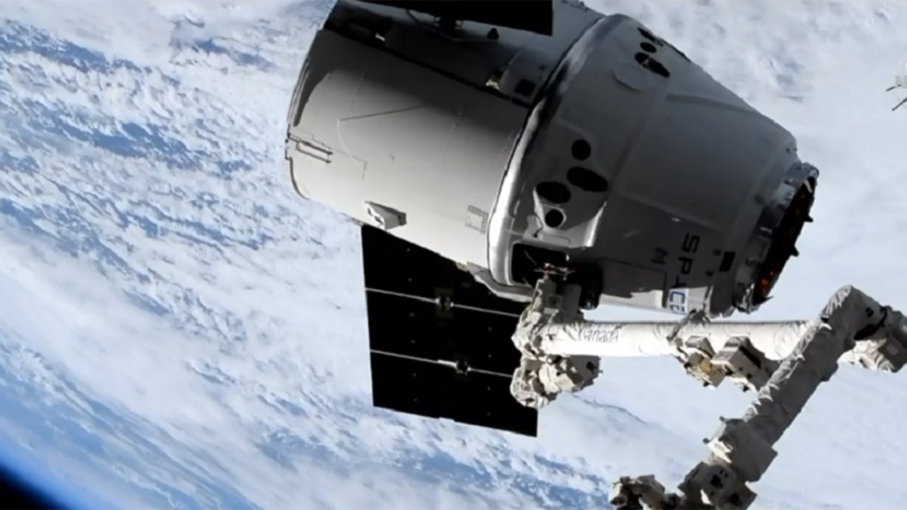How Will We Colonize Other Planets?

If you think that the idea of colonizing other planets is something out of a particularly far-fetched science fiction movie or book, Elon Musk, founder of private space travel company SpaceX, has a surprise for you.
Musk has said that there’s a 70 percent chance that he’ll travel on a rocket to Mars in his lifetime, and that he’s thinking about eventually moving there to live in a human outpost on the surface of the red planet [source: Allen and VandeHei].
Unlike the protagonist of the science-fiction novel and movie “The Martian,” Musk most likely wouldn’t be lonely on the red planet. Back in 2012, at a conference of the Royal Aeronautical Society in London, he sketched out a vision for a Mars colony that eventually would grow to the size of a small- to medium-sized city on Earth, with 80,000 inhabitants [source: Coppinger].
While Musk envisions a private-sector Mars colony, NASA has plans to eventually establish a base on Mars as well. The Trump Administration currently is focused upon revisiting the moon by 2024 and building a permanent base there that would provide the opportunity for “developing the technologies to take American astronauts to Mars and beyond,” in the words of Vice President Mike Pence [source: Wall]. In anticipation of that day, NASA already is testing technologies such as space habitat modules — basically, spacefaring mobile homes that would provide life support for humans living on the surface of other worlds [source: NASA].
The European Space Agency also has envisioned setting up its own “Moon Village” on the lunar surface [source: Woerner].
Meanwhile, visionaries also are looking toward the eventual colonization of Earth-like exoplanets orbiting around other stars [source: Ceriotti].
What has humans looking to make new homes in the cosmos? The National Space Society, a private-sector organization that promotes a spacefaring future, cites a variety of reasons for building colonies in space. One reason is that other worlds contain vast amounts of metals and other natural resources and potential sources of energy, and provide opportunities for “potentially profit-making industries” [source: National Space Society].
Establishing outposts on other worlds also might be a way to hedge the bet on humanity’s survival, in case our existence on our home planet is threatened by a nuclear war, climate change, pandemics and population growth. The late physicist Stephen Hawking believed that humanity needs to colonize another planet within the next century, if it is to avoid the threat of extinction [source: Kharpal].
But before humans venture to distant worlds, they’ll most likely be starting with a colony on the moon. In the next section, we’ll look at what might be needed to live there.
Ever since the Apollo program put the moon within our reach, establishing a lunar outpost has seemed a logical next step. Earth’s natural satellite offers several advantages over more distant destinations, such as Mars or Saturn’s moon Titan. First, it’s relatively close, which means crews could get back and forth from the Earth and moon in just a few days. Additionally, a lunar base would enable use to learn a lot about the effects of low gravity, isolation, high doses of cosmic radiation, and disrupted circadian rhythms on human space colonists — knowledge that would be invaluable when we eventually venture to other worlds [source: Fecht].
Additionally, the moon’s low gravity and closeness to Earth would make it an ideal location for a spaceport from which astronauts could embark on missions to Mars and worlds even further away. And in terms of long-term possibilities, the moon is a big place — its surface is roughly the size of Africa — and it has plenty of room for human colonists [source: Gent].
But living on the moon won’t be any picnic. With no atmosphere, it experiences huge temperature extremes, swinging from minus 298 degrees Fahrenheit (minus 183 degrees Celsius), at night, to 224 degrees Fahrenheit (106 degrees Celsius) in the daytime at the equator [source: CalTech]. Its surface is also peppered constantly by micrometeorites and cosmic rays [source: Redd].
To survive those hostile environmental conditions, some experts think that colonists will likely have to place their habitats under the lunar soil or at the base of a lava tube [source: Redd]. Others envision domes built by robots equipped with 3D printers, which would provide protection [source: Gent].
Then there’s the issue of food and water. In 2018, a team of scientists spotted the first definitive evidence of water ice on the lunar surface, a discovery that suggests that future lunar colonists might be able to extract their own supply, which could provide water for drinking and for irrigating plants in lunar greenhouses, as well as a raw material for rocket fuel [sources: NASA, Grush].
NASA’s current plan for returning to the moon involves building a lunar orbital station, the Gateway, which will serve as a staging area for teams of astronauts to make short visits to the lunar surface. The first part of the Gateway is scheduled to be sent into space on a private rocket in 2022 [source: NASA].
Keep reading to find out what the plan is for Mars.



 Creators of mankind
Creators of mankind Description of “Tall white aliens”
Description of “Tall white aliens” Where they came from?
Where they came from? About hostile civilizations
About hostile civilizations The war for the Earth
The war for the Earth “Tall white aliens” about eternal life
“Tall white aliens” about eternal life Video: “Nordic aliens”
Video: “Nordic aliens” Aliens
Aliens Alien encounters
Alien encounters The aliens base
The aliens base UFO
UFO Technology UFO
Technology UFO Underground civilization
Underground civilization Ancient alien artifacts
Ancient alien artifacts Military and UFO
Military and UFO Mysteries and hypotheses
Mysteries and hypotheses Scientific facts
Scientific facts


















